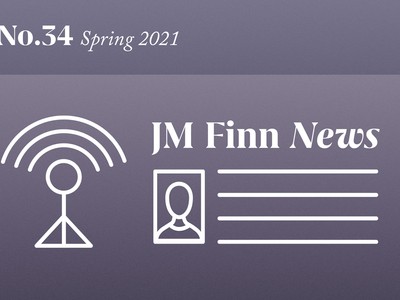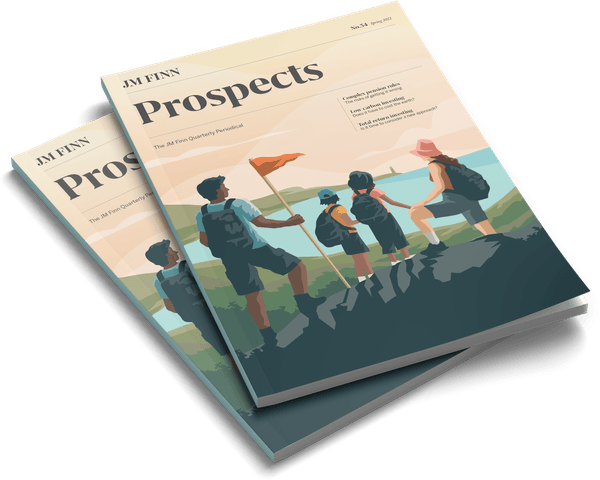Our asset allocation committee is one example of this, via their monthly output showcasing their views on a global basis; this is then complemented by a sectoral view from the stock selection committee. The combination of these top down and bottom up opinions is an important resource for our investment managers to validate their own investment theses or to generate new investment ideas.
These committees, which consists of members of our research team and a number of investment managers, aim to provide a view that seems most suitable in the current climate. The output of the monthly meetings remains a suggested stance and it is important to note, that the views expressed are those of the committees and may not necessarily be those of your individual investment manager.
Here we present a snapshot of the current views.
SECTOR VIEWS
|
Materials |
Hard commodity markets have shown resilience helped by support from China. Majors with strongest balance sheets should continue to pay dividends. |
|
Consumer |
We like the sector for its defensive attributes and high quality businesses and it has shown its resilience recently. However, valuations do not look that compelling and so retain a neutral stance. |
|
Consumer |
There are many high quality companies and we favour those with structural and disruptive growth characteristics with an online presence. We like the sector based on these businesses emerging from the current recession stronger, with many new and retained customers. |
|
Financials |
This includes a broad range of stocks which are generally geared to investment markets. Valuations not at a level to turn more positive. |
|
Financials |
High levels of regulation, falling interest rates globally and recessionary conditions makes us reluctant to turn positive yet. Longer term structural headwinds and a sector ripe for digital disruption for the foreseeable future. We think balance sheets generally are solid enough to endure the current situation. |
|
Financials |
Whilst acknowledging the structural difficulties on the high street and concerns over liquidity in open ended vehicles, we do see value in some areas. We would rather see more visibility from the impact of easing lockdowns before becoming positive again. |
|
Financials |
These companies need to hold more regulatory capital post COVID-19, however, we are more positive in light of possible support from rising bond yields and rotation into financials. |
|
Financials |
Global real estate may offer better value. Caution on bond proxy status and COVID-19 impact. |
|
Health Care |
Growth and defensive attributes and global demographic tailwind. Distinguish between pharma/healthcare/biotech sub sectors. Remains a key theme for medium term, reinforced by current crisis. |
|
Industrials |
We see increasing evidence that economic activity is improving and see this broadening out over the coming months. |
|
Energy |
Structurally the sector remains under pressure, but short term catalysts lead us to be more constructive. |
|
Information Technology |
We are positive but selective and wait for market weakness to add to the quality names. |
|
Communication Services |
We are selective and focus on quality compounders and avoid traditional telcos. |
|
Utilities |
Sector has seen some safe haven support however is not immune from the slowdown as business customers suffer. |
UK EQUITIES
|
UK |
The UK risks Brexit souring. The pound has been strong which introduces more downside risk than upside. The UK is overweight miners and oil companies that are shunned by some investors on sustainability grounds, although the recent rally has helped. The vaccine roll out has been world beating and should drive the economy ahead. We remain cautious due to vaccination risks and a chance that expectations for strong global growth could disappoint. |
INTERNATIONAL EQUITIES
|
North America |
We went to neutral in 2020 as growth companies ceased to be so shareholder value creating in a rising interest rate environment. Future risks include the US stimulus failing to pass into law or being watered down due to rising inflation and firmer rates. The positives are that the Fed continues to promise accommodative monetary policy on the basis that inflation will be a short-term blip. |
|
|
Europe |
The risks are that too much unemployment prevents a virtuous cycle taking off, growth is slower than in US because the EUR 750 billion rescue package appears slowly in H2 and that Chinese stimulus may be more consumer orientated and less external. The positive is the hope that Europe's high correlation to China, benefits from external Chinese demand. |
|
|
Japan |
If the trade war subsides under Biden, Japan could ride the coat tails of Chinese growth with continued internal stimulus ongoing. Governance reform will help. Fiscal stimulus remains supportive as does having the BoJ in "whatever it takes" mode. We are cautious of much needed corporate reforms delivering on their promises and driving higher returns although more share buy backs will help. That said we are unimpressed by the slowness of vaccinations. |
|
|
Asia Pacific |
In spite of reports of local unrest due to lockdowns we remain OW. China is not imploding under a debt burden, instead the leverage is supporting the economy in a co-ordinated way. China was first out of COVID-19 and stands a good chance of continuing to lead the way forward. High metal prices suggest that internal demand is supported by Chinese growth. |
|
|
Emerging Markets |
Whilst we are watching the slower than desired vaccine roll out, we are cognisant that the USD is in a long-term counter-cyclical bear market, which will help. China is more than 1/3rd of the emerging market index and trumps concerns that we have over countries like Brazil and Turkey. |
BONDS
|
Conventional |
Last quarter we described gilts as being return free risk. The risk has materialised with sharp drops at the long end of the maturity spectrum. The prospect of inflation, driven by the temporary impact of base effects and demand being fed into a sub-optimal supply chain is a concern. |
|
|
Corporate |
Given our overweight equity position we would prefer to be underweight corporate bonds. There is a possibility that corporate spreads could reduce further but we think the upside from spread contraction has probably reached its limit. |
|
|
Index Linked |
OW hedges against inflation taking off. The expansion of money supply could feed through to inflation, especially if strong demand meets a COVID-19 broken supply chain. Base effects will help short term inflation as well. Electronic channels that enable governments to pump money into bank accounts in an instant, make helicopter money an effective tool to fight deflation. Linkers appear to be more like a call option on inflation. |
CASH
|
Cash |
Cash has a poor yield but keep some on the sidelines for a possible pullback. |
PROPERTY
|
Property |
Real estate lies somewhere between equity and bond and we prefer equities right now. Choose exposure with care and avoid residential and retail. |
ALTERNATIVES
|
Alternatives |
We prefer to make more precise calls in equity, cash and fixed income. We like infrastructure as a diversifier within the sector. |




